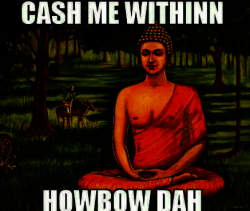Vipassana

Silence is a rare commodity in our modern world. With lots of people working two jobs as a norm, going to school, running around doing extra errands almost every day, many of us don’t have much time for ourselves. When we end up with some time for ourselves, often we seek out an easy form of entertainment to distract us from our inner dialogue, or drinking and partying to wind down the week and have some fun before returning to the weekly grind. Our inner anxieties grow as we distract ourselves and avoid looking at them, making a cycle of increasing anxiety and less of an ability to deal with it.
The world is not how it was in our parents generation and beyond. The permeation of technology into our society has completely changed how we view the world, ourselves, and our free time. The internet has brought our distant neighbours right to our doorstep. Nearly all of human information is available on a piece of electronics and glass we keep in our pocket. Daily we hear of shocking headlines, gossip, corruption, bombing, murders, tragedies..
We don’t have the time to deal with the emotional impact of this bombardment of the senses. Many of us become desensitised to the strife, while our attention spans continually decrease.
Many of us don’t remember, or haven’t been alive before internet use became widespread. How many of us have had a week away from any kind of technology? Half a week? Even a day? How often do we give time for ourselves to really feel what is going on internally, rather than retreating to external simple pleasures?
I certainly hadn’t experienced much time away from distraction and technology before. But after reading about these silent Vipassana retreats, I thought I should see for myself what time away from my normal behavioural patterns would be like. The course is taught post-mortem by S.N. Goenka, and although it is from a Buddhist tradition, the course is not about becoming a Buddhist. There is no dogma associated, it’s just about learning the raw technique. This means that you can be of any religious or non-religious persuasion and still get a large amount of benefits from it. Each day follows pretty much the same schedule, but the meditation instructions deepen every day, taking the full 10 days to understand the depth of the technique.
Silent retreat doesn’t just mean no talking. At the retreat you’re not supposed to have any reading materials, or anything write anything down in. The retreat is about making the conditions to approximate mental silence, rather than only outward silence. This also means doing your best to avoid eye contact with people, or any kind of body language and gesturing.
That being said, there is time every day that you can have a 1 on 1 interview with one of the assistant meditation teachers. They are really helpful in answering questions to do with the technique, clarifications you may need, or help through any struggle you may be facing. You can also talk to the men or women’s manager if you have any concerns about more general things.
The course is free for attendee’s which was one of the reasons I felt okay to take the plunge. It’s paid for by donations of anyone who has taken a course in the past, or if you want to donate at the end of your first retreat.
This is pretty incredible considering the fact that they feed and house you for 10 days. It’s worth mentioning too that the food is excellent. They’re all vegetarian meals through the week to help keep your body clean and not feel to heavy while meditating. By the end of the 10 days, you feel in a very clear mindspace, both from the meditating and just how well you eat through the time. Both times I’ve gone there have been build-your-own-taco/burrito days, delicious soups and curries, shepherds pie, apple crumble, and on and on. Even in my lowest points psychologically during the retreats, I always found that sitting down to have some food and tea brought be right back to a content awareness.
The time at the retreat works as a much needed reset from our hectic modern lives. You are able to get in touch with yourself. People are able to get to a point where they can see their inner worries, anxieties, frustrations and desires for what they are in clear sight. It gives one an opportunity to strip away the bullshit they tell themselves every day, and pierce into the root of the issues themselves.
I came back with a renewed outlook on life. The benefits didn’t just end with the last day of the retreat, but rather these experiences work as catalysts of how to live better and treat yourself and others in a better way. The normal reactions we would have from annoyances, or any kind of turbulence in our life we come away with an increased ability to deal with. A way to calm and bring equanimity to the churning waters of our minds.
Retreats aren’t a panacea or cure all for our issues, but it can help us tune back into ourselves, and allow us to live in a more gentle and aware way going forward.
There are hundreds of these Vipassana centres around the world operating year round, more than 1 in many countries. In terms of my own personal development, there are few experiences that have been as important than these retreats. Consider taking the plunge, everyone needs a reset sometime.
For more on my personal experience at the retreat and more about the method itself, stay tuned for part 2!
Trackbacks & Pingbacks